With the veneer glued, I can now do some preliminary shaping. I’m using the classic Martin headstock shape, but with with a gentle radius on the top edge. The pic above right shows the ebony/holly/mahogany sandwich. That’s going to look really nice when it’s finished.
Making An Acoustic Guitar - Page 16
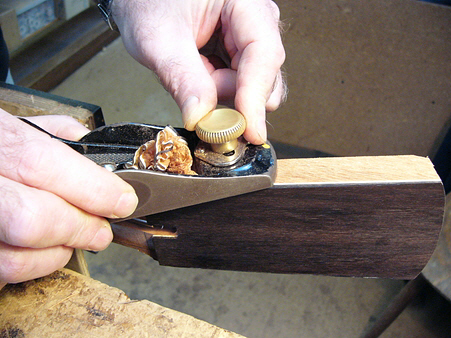
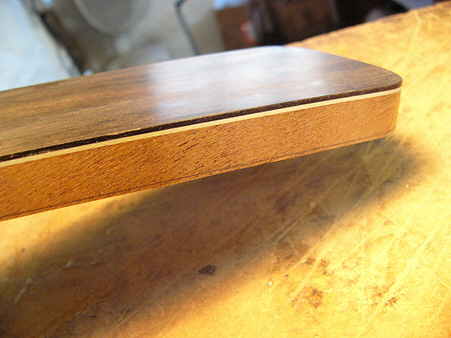
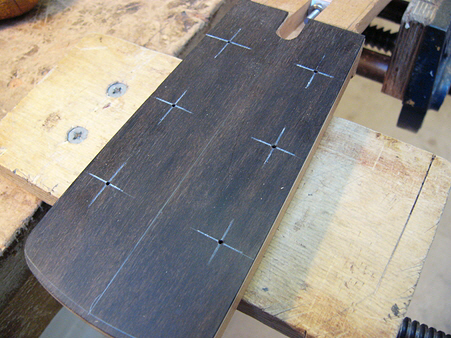
Finally - for now - I’ll mark out the positions for the tuner posts, drill out the holes and ream them for the ferrules.
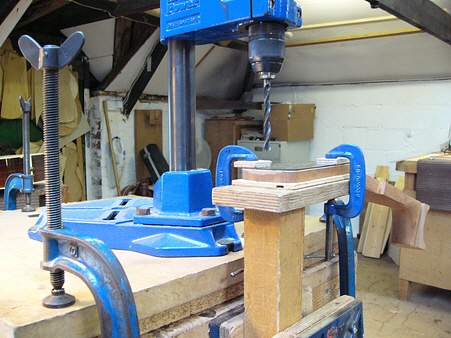
With the headstock planed true, and before the truss-rod is glued into the neck, I need to prepare and glue the headstock veneer. I’m using an ebony veneer, onto the underside of which I’ve glued a layer of pale white holly veneer which will create a pin-stripe effect. (I pinched that idea off my Gibson J-185-12). Before the veneer sandwich can be glued to the headstock the edge that mates with the nut must be planed so that it is perpendicular to the fingerboard. This will ensure that a neat slot for the nut can be created later. In the first pic above, the veneer sandwich is clamped into position under a sheet of scrap plywood to prevent damage to the top surface.
Next, after careful positioning, the veneer is glued to the headstock face.
Next, after careful positioning, the veneer is glued to the headstock face.
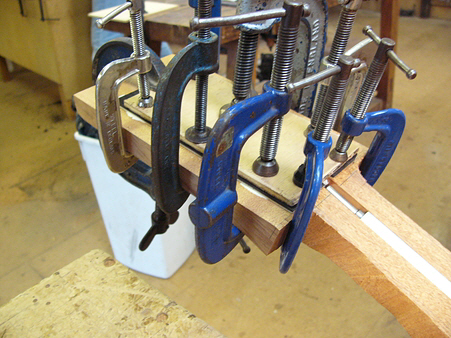
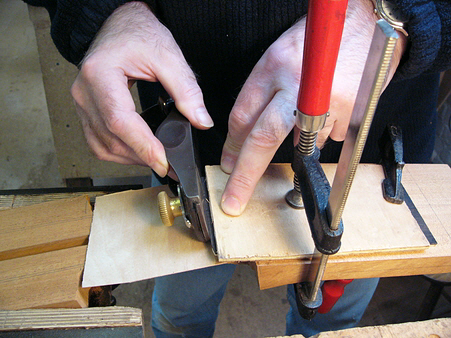
Part 12 - The Headstock